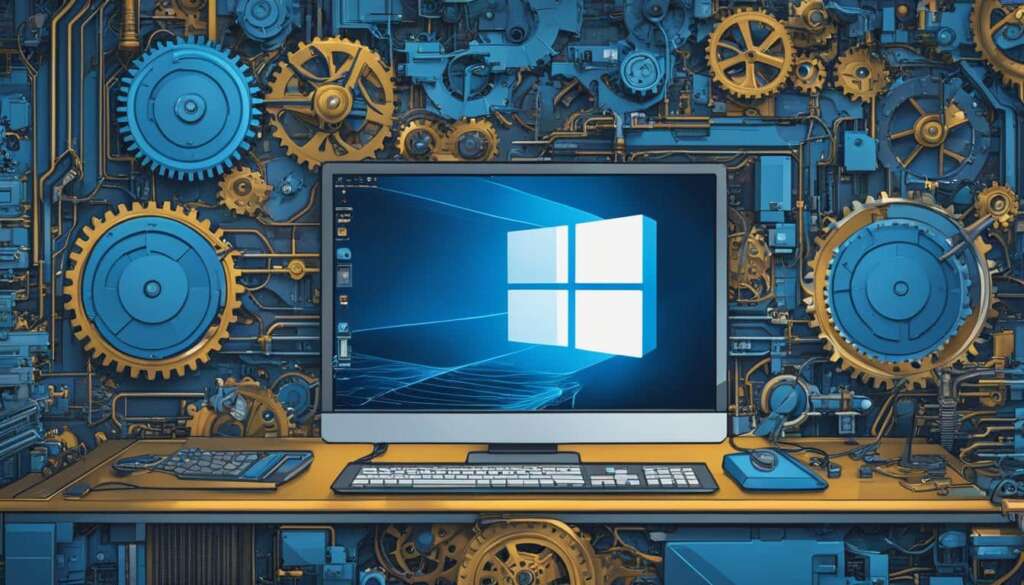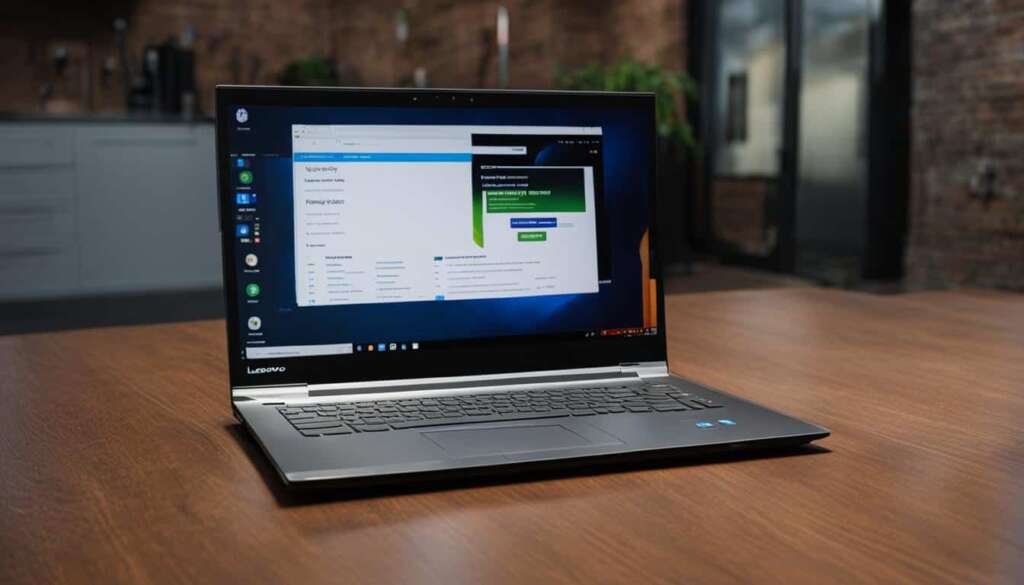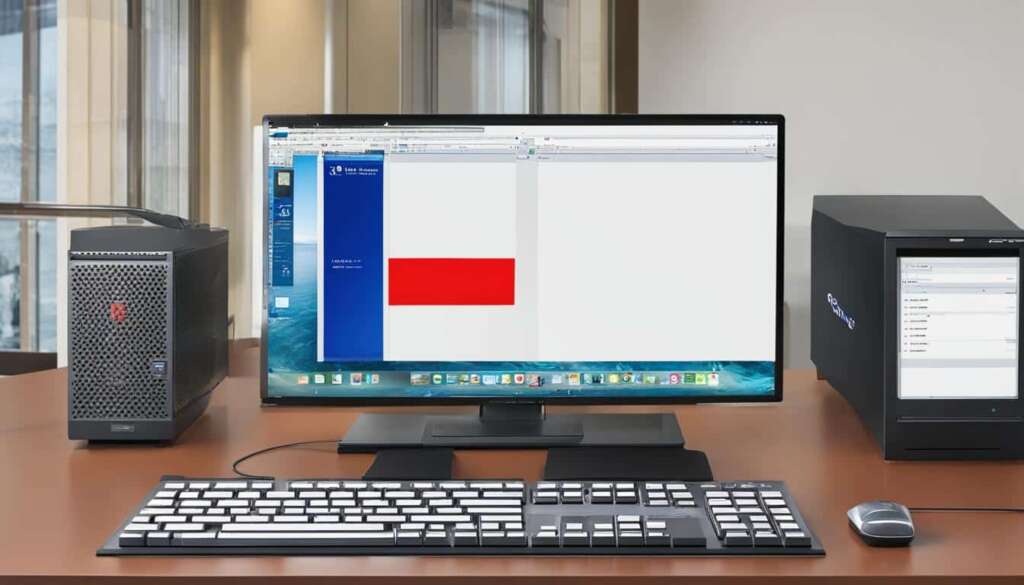Table of Contents
If you’re facing persistent issues with your PC running Windows 10 or simply want to give it a fresh start, performing a factory reset can be a helpful solution. This process allows you to reset your PC to its original settings, resolving problems and removing any customized settings or installed applications. Whether you plan to sell or donate your old PC or need to troubleshoot hardware problems, a factory reset can provide a clean slate. In this guide, we will explore how to factory reset your PC in Windows 10 while preserving your personal files.
It’s important to note that a factory reset will remove all installed applications and customized settings. However, you have the option to keep your personal files intact. Let’s delve into the process of factory resetting your PC in Windows 10 and the steps involved.
- Click on the Start menu and select the gear icon to open the Settings window.
- In the Settings window, click on “Update & Security” and then select “Recovery”.
- Under the “Reset this PC” section, click on “Get started”.
- Choose between two options: “Keep my files” to remove only downloaded apps and settings, or “Remove everything” to wipe the drive clean, including personal files.
- If you selected “Remove everything”, you may be prompted to choose whether you want to just remove files or completely wipe the drive. It’s recommended to choose the latter option for a complete reset.
- Confirm your choice and let the resetting process finish. This can take some time depending on the type of reset and amount of data on your PC.
- Once the reset is complete, you can set up your PC again.
Before performing a factory reset of your PC in Windows 10, there are a few tips you should keep in mind:
- Back up your important files to avoid any data loss.
- Make sure you have the necessary installation files or access to app stores to reinstall applications that will be removed during the reset.
- Consider customizing additional settings during the reset process, such as restoring preinstalled apps or wiping multiple drives, to meet your specific requirements.
- Be patient as the factory resetting process can take some time, especially if you’re performing a complete wipe.
- Once the reset is finished, take the time to set up your PC according to your preferences and reinstall any necessary applications.
By following these steps and tips, you can successfully factory reset your PC in Windows 10, ensuring a fresh start and resolving any persistent issues you may have encountered.
How to Factory Reset Windows 10
To factory reset your PC in Windows 10, follow these steps:
- Click on the Start menu and select the gear icon to open the Settings window.
- In the Settings window, click on “Update & Security” and then select “Recovery”.
- Under the “Reset this PC” section, click on “Get started”.
- Choose between two options: “Keep my files” to remove only downloaded apps and settings, or “Remove everything” to wipe the drive clean, including personal files.
- If you selected “Remove everything”, you may be prompted to choose whether you want to just remove files or completely wipe the drive. It’s recommended to choose the latter option for a complete reset.
- Confirm your choice and let the resetting process finish. This can take some time depending on the type of reset and amount of data on your PC.
- Once the reset is complete, you can set up your PC again.
Tips for Factory Resetting Windows 10
Before performing a factory reset on your Windows 10 PC, it’s important to consider a few key tips to ensure a smooth and hassle-free process.
1. Back up your important files: Creating a backup of your important files is essential before initiating a factory reset. This step will help you avoid data loss and ensure that your valuable documents, photos, and other files are safely stored.
2. Prepare for reinstalling applications: Since a factory reset removes all installed applications, it’s crucial to ensure that you have the necessary installation files or access to app stores to easily reinstall your favorite applications once the reset is complete.
3. Customize additional settings: During the reset process, you may have the option to customize additional settings. Take the time to review these options and choose the ones that best suit your needs. This could include restoring preinstalled apps or wiping multiple drives.
4. Be patient: Factory resetting your PC can take some time, particularly if you’re performing a complete wipe. It’s important to be patient and allow the process to complete without interruption. Avoid restarting your PC or interrupting the reset process, as this may lead to complications.
5. Set up your PC again: Once the factory reset is finished, it’s time to set up your PC according to your preferences. Take this opportunity to reinstall any necessary applications and customize your settings to get your PC back to its optimal state.
FAQ
What is a factory reset on Windows 10?
A factory reset on Windows 10 is the process of restoring your PC to its original state, as if it just came out of the factory. It removes all installed applications and customized settings.
Why would I need to perform a factory reset on my PC running Windows 10?
There are several reasons why you might need to perform a factory reset on your PC running Windows 10. It can help resolve persistent issues, such as crashes or hardware problems. It can also provide a fresh start if you’re preparing to sell or donate your old PC.
How do I factory reset my PC in Windows 10?
To factory reset your PC in Windows 10, follow these steps:
1. Click on the Start menu and select the gear icon to open the Settings window.
2. In the Settings window, click on “Update & Security” and then select “Recovery”.
3. Under the “Reset this PC” section, click on “Get started”.
4. Choose between two options: “Keep my files” to remove only downloaded apps and settings, or “Remove everything” to wipe the drive clean, including personal files.
5. If you selected “Remove everything”, you may be prompted to choose whether you want to just remove files or completely wipe the drive. It’s recommended to choose the latter option for a complete reset.
6. Confirm your choice and let the resetting process finish. This can take some time depending on the type of reset and amount of data on your PC.
7. Once the reset is complete, you can set up your PC again.
What should I consider before performing a factory reset?
Before performing a factory reset, consider the following tips:
– Back up your important files to avoid data loss.
– Make sure you have the necessary installation files or access to app stores to reinstall applications.
– Customize additional settings according to your preferences.
– Be patient during the reset process, as it can take some time.
– Take the time to set up your PC again and reinstall any necessary applications.







